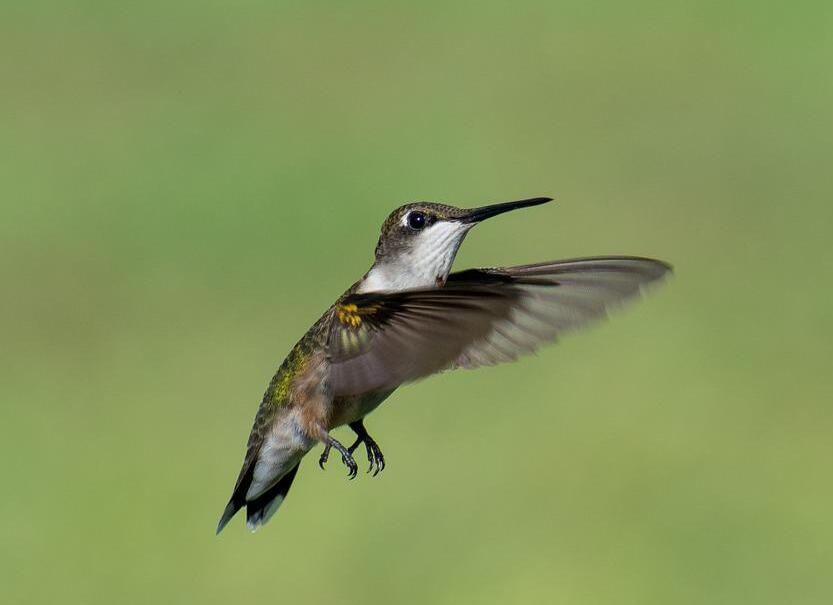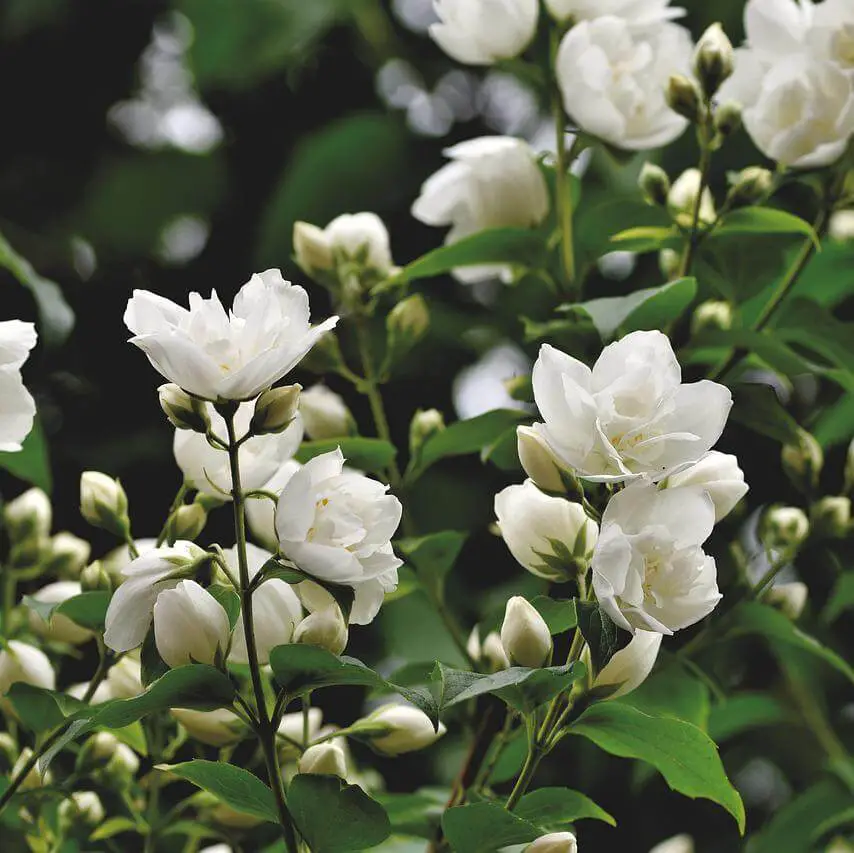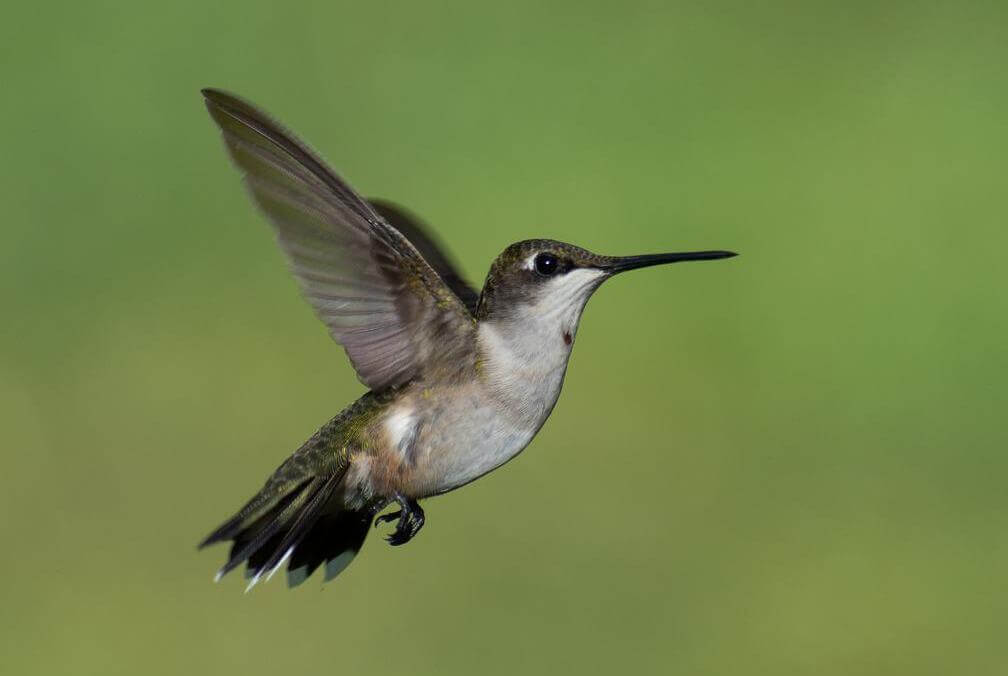It is really a delightful experience to watch the cute little hummingbirds flying around you. And if you’re looking to entice them into your garden, you might be wondering: Do hummingbirds like jasmine?
Hummingbirds love jasmine plants as they enjoy feeding on the nectar that jasmine flowers produce. There are many different types of jasmine plants, but almost all of them are attractive to hummingbirds and may cause them to come and visit.
Read ahead to find out the different types of jasmine plants that hummingbirds like to eat from, and more information on the diet of these adorable animals so that you can find out what might increase your chances of seeing these birds up close.
1. Why Do Hummingbirds Like Jasmine Plants?

Jasmine plants are very popular among hummingbirds as they offer a tasty meal. To really understand why hummingbirds like jasmine plants so much, we need to think about what it is that entices them to a plant in the first place.
Hummingbirds, like many different species of birds and insects, love the sweet nectar that many flowers produce. It is a great source of sugar and an important part of their diet. These sugars give hummingbirds lots of energy, which they burn a lot of as they fly.
There are many things that hummingbirds pay attention to when they are trying to find a potent source of nectar to drink, but the main three are the smell, the color, and the flowers. Jasmine has all of these in abundance, just the way that hummingbirds like them.
- Smell: Many jasmine plants have a strong, sweet scent that tells nearby hummingbirds there is nectar to be had.
- Color: The bright blooms and vibrant coloring of jasmine plants (including whites, pinks, yellows, and greens) also indicate a delicious meal in the eyes of a hummingbird.
- Flowers: Most jasmine plants are covered in highly attractive flowers that are easily accessible and very visible to hummingbirds.
2. Why Do Jasmine Plants Attract Hummingbirds?

So, we know that hummingbirds like to eat from jasmine plants, but why do jasmine plants encourage and entice them? Well, jasmine is specifically designed to attract hummingbirds and insects in order to aid the pollination process that allows them to reproduce.
Jasmine develops through pollination, which means that the genetic material from one plant needs to reach another plant of the same species. In order for pollination to occur, jasmine relies on pollinators, like hummingbirds, that they have adapted to attract.
Pollinators are animals (usually insects but sometimes other animals like hummingbirds) that are attracted to the plant, generally so that they can eat the nectar from its flowers.
These animals pick up pollen as they feed. When the pollinator then goes on to feed from another plant, the pollen that they have gathered will be transferred, allowing the genetic material from the two plants to come together.
This process is absolutely essential in order for jasmine plants to grow new seeds and reproduce. In this way, jasmine benefits from the visitation of hummingbirds as much as the birds do themselves.
3. How Do You Grow Jasmine That Is Attractive to Hummingbirds?
If you want to cultivate jasmine in your garden that is going to be attractive to hummingbirds, you need to make sure it is accessible, healthy, and rich in flowers.
Jasmine is not a particularly challenging plant to care for, but there are some important things to keep in mind if you want your plant to grow large and luscious.
- Jasmine likes fertile, well-drained soil, with a good amount of sunlight.
- It may need to be grown in a sheltered or indoor location, to begin with – depending on the variety.
- Summer jasmine should be planted in the spring or the fall, but winter jasmine should be planted in the fall or the winter.
- If you want your jasmine to be accessible to hummingbirds, it should be planted where it has lots of room to grow – preferably a little distance away from any buildings.
- Newly planted jasmine should be regularly watered for at least a year
- Feeding your jasmine with high-potassium liquid feed, or solid feed like sulfate of potash, seaweed feed, or wood ash, will result in more flowers.
- To encourage healthy growth, you should prune the stems soon after they have flowered but remember that leaving good coverage will attract more pollinators.
4. What Are The Different Types of Jasmine?
If you’re convinced that jasmine is the plant for your hummingbirds, the first thing you need to decide is which specific variety you actually want to grow. Any of the many different species of jasmine are likely to please the local hummingbird population, but they all have their own unique characteristics.
Climbing, Summer-Flowering Jasmines
These are the most common jasmine plants, and they are a great option for encouraging hummingbirds. They are generally not as hardy as some of the other jasmine species, but they often have a strong scent and many visible flowers. They grow as climbing vines which makes them perfect for walls, archways, fences, and other structures.
Winter Jasmine
Much hardier than summer jasmine, winter jasmine often has bright yellow flowers, and it is usually grown as a hedge, though it can be trained to grow over a wall as well. This variety starts to flower as early as December, so it can help to attract birds throughout the winter months.
Chinese Jasmine
Chinese jasmine is a very popular variety, though it is usually grown as a houseplant rather than outdoors. It is harder to get this particular kind of jasmine to grow wide and tall enough for hummingbirds to really take notice of it.
5. Which Jasmine Plants Have the Most Attractive Flowers?
One of the first things that hummingbirds will notice about a jasmine plant is its flowers, so which varieties have the most noticeable and attractive blooms?
The jasmine plants with the largest and most vibrant flowers include:
- Asian Star Jasmine: Originating from Asia, the star-shaped flowers of this jasmine plant can grow very large, and they tend to form clusters that will be highly visible to a hummingbird.
- Pink Jasmine: The pink hue of these petals helps to make them stand out to birds, as does the sheer volume of flowers that these plants often produce.
- Showy Jasmine: Also known as Florida jasmine, this variety lives up to its name. It has light yellow flowers and can grow very large very quickly, generally reaching a height of 3-4 feet and a spread of 6-10 feet.
6. Which Jasmine Plants Smell the Strongest?
Of course, another highly appealing aspect of a jasmine plant is the incredible aroma that it can give off.
Not all jasmine plants have a strong, sweet smell, but those that do can make a very pleasant addition to your garden, and their powerful fragrances are likely to encourage more hummingbirds.
- Common Jasmine: You can’t go wrong with the most common variety of jasmine – it’s popular for a reason. It has a very fragrant smell, and it can grow very tall, which means that hummingbirds will be able to see it and smell it from a great distance away.
- Cape Jasmine: This variety has noticeably different flowers. They are large and almost rose-like in appearance, and they produce a very powerful scent.
- Arabian Jasmine: This is the kind of jasmine that is used to make tea, and it has a very sweet, warm fragrance. Unfortunately, when it comes to attracting hummingbirds, they only release their fragrance at night, and they don’t flower for very long.
7. What Other Plants Attract Hummingbirds?

If you really want to bring hummingbirds into your garden, you shouldn’t rely on a single plant. There are many different species that are highly attractive to these tiny birds, and you will have much more luck with a diverse variety of flowering plants.
Some of the other plants that are highly attractive to hummingbirds include:
- Bee Balms
- Cardinal Flowers
- Zinnias
- Salvias
- Bleeding Hearts
- Butterfly Bushes
- Trumpet Creepers
- Lupines
- Columbines
- Petunias
Don’t forget that hummingbirds also like to drink from feeders that contain sugar water, and they need a lot of insects in their diet as well. Flowers alone are not enough to keep a hummingbird population happy.
Final Thoughts
So, do hummingbirds like jasmine? They certainly do! It is a very attractive plant for hummingbirds, and its strong, sweet scent and bright flowers are likely to attract the little birds to any garden.
There are many things about a jasmine plant that hummingbirds really love, and cultivating them is not too complicated for the average gardener.
If you want to please your local hummingbird population, though, you will need a good variety of flowering plants and potentially a feeder as well.
Best of Luck and Happy Birding!
More Posts Worth Reading…


